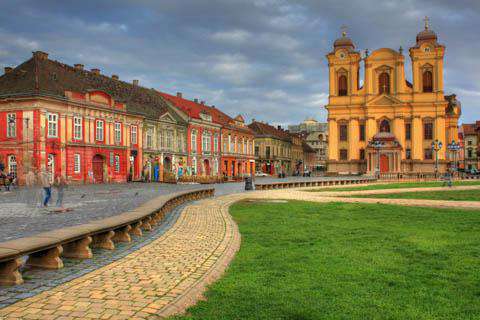Traveling in Timisoara / Temesvar
 Timisoara, Romania
Timisoara, Romania
A very cosmopolitan city, Timisoara has become the main social, economic, and cultural center in western Romania. It is sometimes called little Vienna due to its impressive architecture from the Austria Empire era and abundance of museums.
Neighborhoods & Around
The old city consists of many historic areas, some of which include Cetate, Iosefin, Elisabetin, and Fabric. Cetate, translating to "fortress," is centrally located, and home to the 13th century Timisoara Fortress around which the present-day city was built. Iosefin was originally designed as a village of German colonists on the left side of the Bega Canal made up of houses with lush gardens. Today it is exhibits beautiful old-world architecture in its buildings and churches. Elisabetin is a historic neighborhood, located in the center-south part of town, established after the Ottomans departed in the early 1700s, but not really developing until after a plague in 1837. And finally Fabric, named for its many factories, is historically known as a multicultural neighborhood-one of its most famous factories being the first beer factory in 1718 which still exists today. Beyond these main historic districts, one of the most popular squares in the city is Union Square (or Piata Unirii), which features beautiful historic structures as well as restaurants catering to visitors.

 Budget Your Trip is all about finding out how much everything costs so that you can travel cheaper and longer. Created by avid travelers Laurie and Bryan, our goal is to help you plan your next trip on the right budget. With average daily travel costs that are calculated from the budgets of real travelers, plus an analysis of hotel and tour prices, you can find out how much money you need to plan your next adventure. We also have plenty of travel advice, accommodation reviews, and activity suggestions.
Budget Your Trip is all about finding out how much everything costs so that you can travel cheaper and longer. Created by avid travelers Laurie and Bryan, our goal is to help you plan your next trip on the right budget. With average daily travel costs that are calculated from the budgets of real travelers, plus an analysis of hotel and tour prices, you can find out how much money you need to plan your next adventure. We also have plenty of travel advice, accommodation reviews, and activity suggestions.